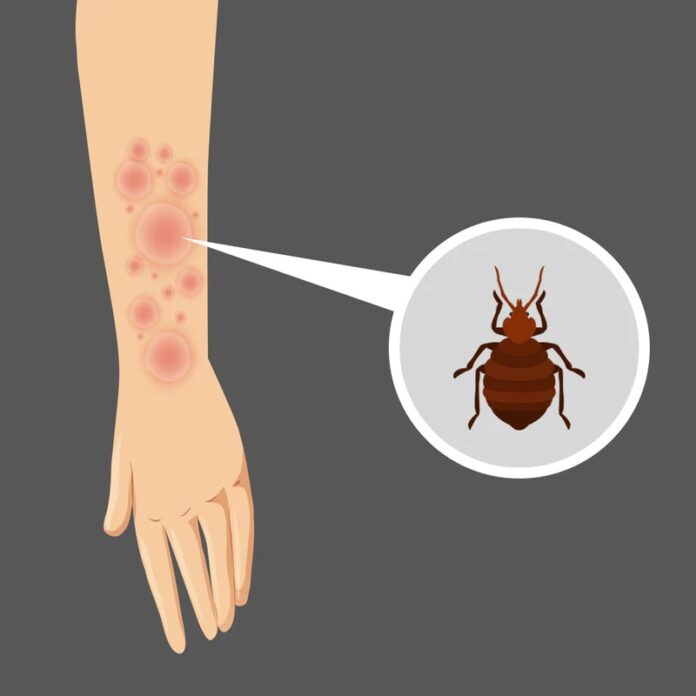
Unraveling the Mystery Behind Bed Bug Bites on Arms: Causes, Symptoms, and Treatment
Bed bugs have emerged as a significant nuisance for households across the world. These tiny insects, scientifically known as Cimex lectularius, feed on human blood while we sleep, causing itchy red bites. While bed bug bites can appear almost anywhere on the body, bites on the arms are commonly reported. In this article, we will delve into the causes, symptoms, and various treatment options for bed bug bites on arms.
Causes of Bed Bug Bites on Arms:
Bed bug infestations usually start when these unwelcome pests are unknowingly introduced into our homes. They often travel through luggage, second-hand furniture, or clothing. Once inside our homes, they quickly hide in mattresses, headboards, furniture cracks, and other tight spaces. At night, they emerge from their hiding spots to feed on human blood.
Given our tendency to rest our arms on surfaces such as mattresses and pillows while sleeping, it is not surprising that arms often become prime targets for bed bug bites. The exposed skin of our arms provides easy access for these nocturnal parasites to feed, leaving behind itchy, red welts.
Symptoms of Bed Bug Bites on Arms:
Identifying bed bug bites can be challenging, as they can often be mistaken for other skin conditions like mosquito bites or allergies. However, there are a few key characteristics that can help you differentiate bed bug bites on arms:
1. Red, itchy welts: Bed bug bites usually appear as small, raised, red bumps on the skin that may itch intensely. They often occur in clusters or straight lines, indicating multiple feeding spots.
2. Sequential pattern: Due to the feeding behavior of bed bugs, bites on arms may appear in a sequential pattern, where new bites are closer to the existing ones. This pattern is a result of the bugs moving along the arm while feeding.
3. Swelling and inflammation: In some cases, bed bug bites on arms can cause mild to moderate swelling and inflammation due to an allergic reaction. This reaction often exacerbates the itchiness and discomfort.
Treatment options for Bed Bug Bites on Arms:
If you suspect bed bug bites on your arms, it is crucial to take immediate action to relieve symptoms and prevent further infestation. Here are some effective treatment options:
1. Clean the affected area: Wash the affected arms with mild soap and water to cleanse the area and reduce the risk of infection. Avoid excessive scrubbing, as it may worsen the itchiness.
2. Topical antihistamines or corticosteroids: Over-the-counter creams or ointments containing antihistamines or corticosteroids can provide relief from itching, redness, and swelling. Apply them as directed on the packaging.
3. Cold compresses: Applying a cold compress to the affected area can help reduce inflammation and alleviate the itching sensation. It also provides temporary relief from discomfort.
4. Oral antihistamines: If the itching is persistent, taking an oral antihistamine can help alleviate symptoms. Consult with a healthcare professional to determine the appropriate dosage and medication for your specific needs.
5. Avoid scratching: It is essential to resist the temptation to scratch bed bug bites, as scratching can break the skin and increase the risk of infection. If necessary, cover the affected area with a bandage to prevent scratching during sleep.
Preventing Bed Bug Bites on Arms:
Prevention is the best defense against bed bug bites on arms. Here are some practical steps you can take to minimize the risk of infestation:
1. Regularly inspect for signs of bed bugs: Periodically check your mattresses, upholstered furniture, and bedding for any signs of bed bugs, such as fecal stains or tiny blood spots.
2. Encase mattresses and pillows: Using bed bug-proof encasements on mattresses and pillows creates a barrier against these pests, preventing them from infesting your sleeping surfaces.
3. Reduce clutter: Clutter provides additional hiding spaces for bed bugs. Keep your living space tidy and minimize unnecessary items to make it easier to spot any signs of infestation.
4. Practice vigilance while traveling: When staying in hotels or other accommodations, inspect the mattresses, headboards, and any cracks or crevices for signs of bed bugs. Additionally, avoid placing your luggage on beds or upholstered furniture.
5. Professional pest control: If you suspect a bed bug infestation in your home, it is advisable to seek professional pest control services. Bed bugs are notoriously difficult to eliminate, and a thorough treatment by experts can be highly effective.
Conclusion:
While bed bug bites on arms can be uncomfortable and irritating, understanding their causes, symptoms, and appropriate treatment options can help alleviate the discomfort. By practicing preventive measures and promptly addressing infestations, you can safeguard your home and arm yourself with the necessary knowledge to combat these elusive pests for a peaceful night’s sleep.


















